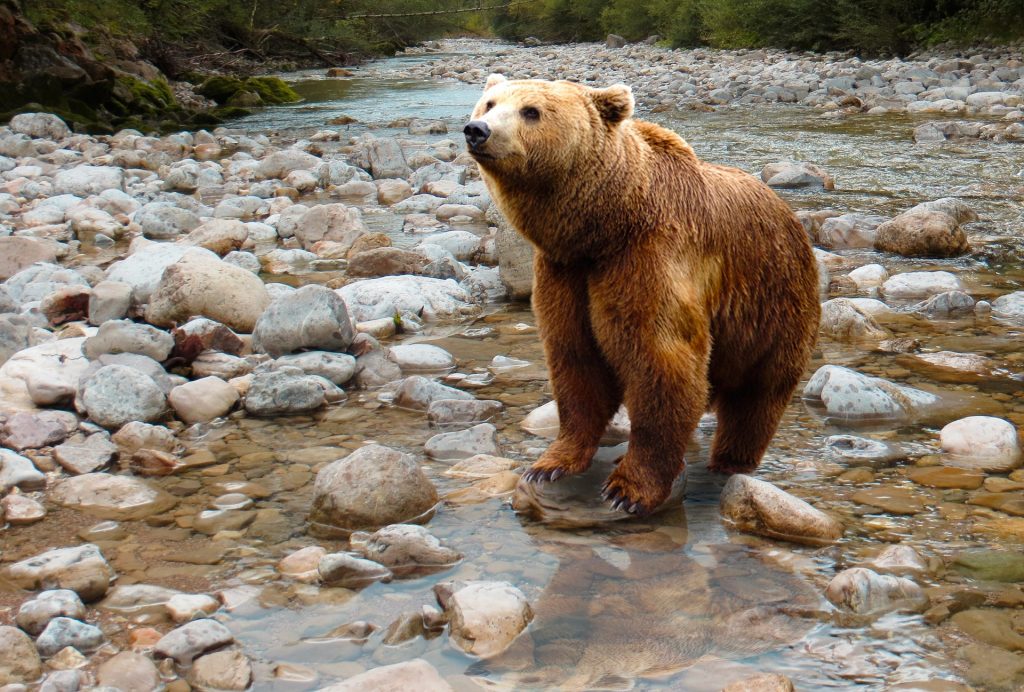Many of us see North America as a number 1 destination because of it’s landscape, beauty, nature and wilderness. Only a few would not agree that Canada and The United States of America has a lot to offer to travellers who love nature and hiking. But many of backpackers from other countries still do not completely understand that if you choose to go hiking in North America, it can be as wild as it gets.
In this article, we will tell you the main things you need to know about bear awareness. So iff you plan on hiking in North America, you should have a look.

Safety in Numbers
Statistically, there are a lot fewer bear sightings if you hike in groups of four and more people. If you are alone in the forest, try going on a guided ranger hike. Do not take your dog or other pets with you as bears treat dogs as their natural enemies.
Know when to go hiking
Avoid hiking in North America at dawn or dusk as bears are most active during these times.
Best time for singing: make constant loud noises
Bears try to avoid people, so if they know you are coming, they will try to get out of your way. One of the worst situations is if you surprise a bear or approach one too near not even knowing he is there. Shout and clap regularly to make it more effective. Don’t trust on the bear bells too much. Increase shouting and clapping intervals near blind curves, noisy streams or on a windy day. Bears do not hear above the noises of a loud stream and if the wind is blowing towards your face, it means bears may not smell you are coming. Also, pay closer attention in heavy vegetation areas as they will be harder to spot.
Do not go on closed hiking trails
It may be safe in some parts of Europe, but when you’re hiking in North America – if the trail is closed, it’s closed for a reason. Very likely that the trail might be closed because of bear sightings.
Observe bears only from a distance
Do not approach bears for a better look or a photograph. The safe distance is around 100 meters, do not get closer than that. Personally, we would increase the distance even more as the bear can get the feeling someone is following him.
Carry a bear spray
It does not guarantee your safety, but it’s a good last option if you find yourself in a dangerous situation and see that the bear is not backing down and is aggressive. Use it only as the last resort because in most cases, you can back away peacefully.
Keep your camp clean
Store odorous items such as food, coolers, utensils and toiletries in a vehicle or food locker. Toss garbage in bear-proof garbage cans. Dump water used to rinse dishes and hands in a rest room utility sink, not on the ground. These are park regulations, not simply recommendations!
Do not leave any odorous items unattended
Every backcountry campsite has a special cable or pole from which you can hang food and garbage. Cook and eat only in the designated food-preparation area, and hang the clothes you cooked in as it can reek of your food. Camp as far away from the cooking and food hanging areas as you can. Pack out all garbage.

If You See a Bear
All bears are dangerous. Never approach or feed one. Bears will fiercely defend cubs and food. If you encounter a bear at close range, stay calm and slowly leave the area by backing away. Do not run or scream; this may provoke a chase. Climbing a tree is not always an option because there may be a lack of time and trees, and black bears and some grizzlies can also climb trees. Bear attacks are exceptionally rare when hiking in North America. When they do occur, it’s usually because the bear perceives a person as a threat. If an attack should occur, act submissive and protect yourself by rolling up on the ground with your fingers interlocked behind your neck and your knees pulled to your chest. Leaving your backpack on may provide extra protection for your back and neck. When the bear no longer feels threatened, it will usually leave the area. Do not move or make noise until you are sure the bear is gone.
These are just the main rules of staying safer from bears while hiking in North America. If you want to know more, we suggest having a look at this detailed article on bear awareness.
On a final note, do understand, that bear attacks are very rare. You are more likely to get killed in a car accident or by a falling coconut. But you have to respect the wilderness and stay aware of your surroundings.
And always remember – you only need to run faster than the last person. Just kidding 😉

Pingback: Wildlife of Yellowstone - that's why you go here! - Backpackers Nation